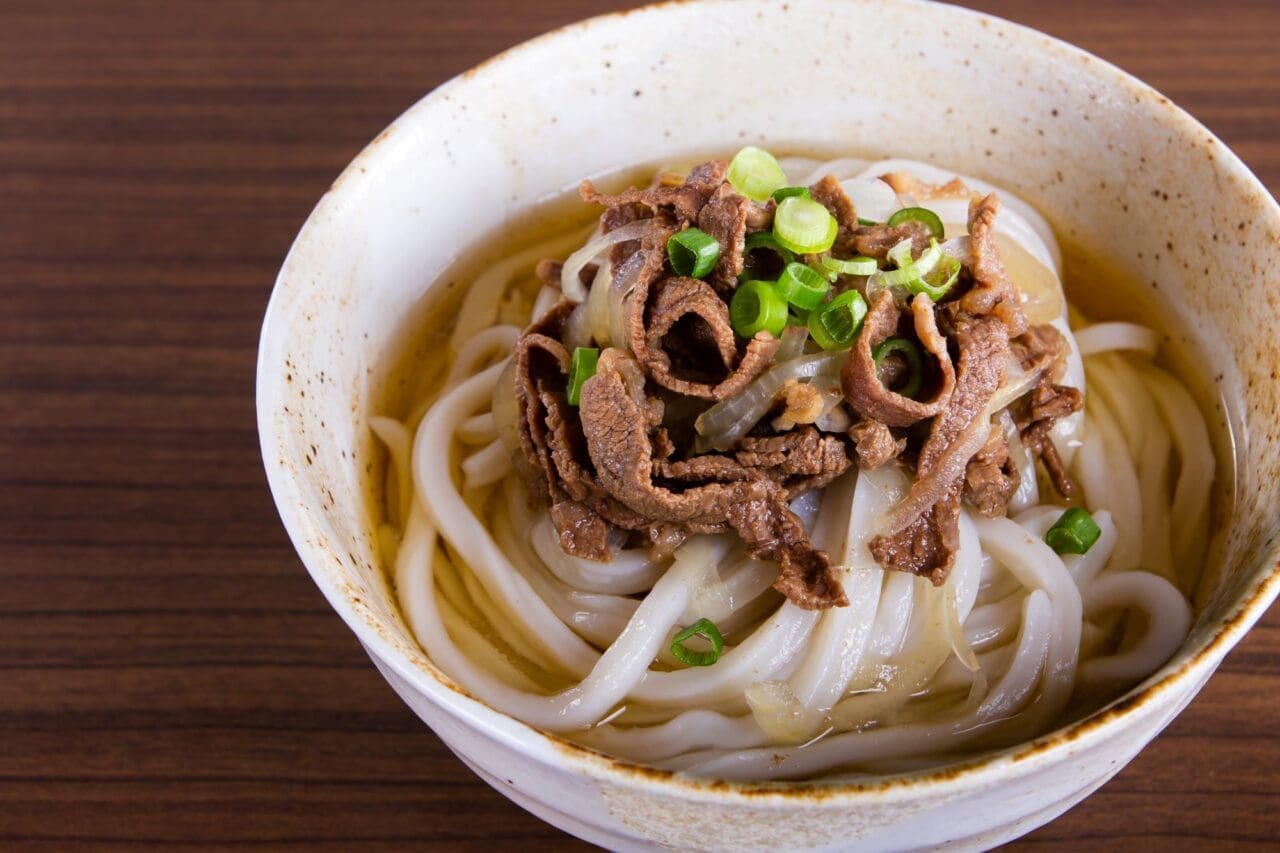Traditional Japanese Dishes: 15 Authentic Foods You Must Try in Japan

Planning a trip to Japan? While there are endless breathtaking places to visit, your trip cannot be complete without sampling some of the top traditional Japanese dishes. Japan is renowned for its diverse and unique cuisine, from a wide variety of seafood options to numerous noodle dishes.
If you love new experiences and are ready to experience the full diversity of Japan, you must indulge in its traditional dishes to truly experience its culinary heritage. In this article, we will talk about the top traditional Japanese dishes you must try in Japan:
Don’t miss these related articles!
Traditional Spanish Dishes: 10 Traditional Foods You Must Try in Spain
Authentic Peruvian Cuisine: 10 Traditional Dishes You Must Try in Peru
Authentic Thai Cuisine: 8 Traditional Dishes You Must Try in Thailand
15 Must-Try Traditional Japanese Dishes
This is just a starting point. The best way to discover Japanese cuisine is to be open-minded and adventurous. Without further ado, let’s get into some traditional Japanese dishes to get you started:

Sushi
Sushi tops the list of the most popular traditional Japanese dishes around the world, and for a good reason. It’s made with vinegared rice and other ingredients, including eggs, seafood, and vegetables. There are different types of sushi, but the most common ones are nigiri, maki, and temaki. You can find sushi restaurants all over Japan, from high-end establishments to affordable sushi bars.
Ramen
Ramen is another traditional dish in Japan that is widely popular worldwide. It’s a noodle soup dish made with Chinese-style wheat noodles in a broth, often meat or fish-based, topped with meat, vegetables, and egg. Each region in Japan has its own variation of ramen, so you can try different types wherever you go. Ramen shops are ubiquitous in Japan, and you can find them in every corner of the country.
Soba
This is a type of noodle made from buckwheat flour. It’s served either as a cold dish with dipping sauce or a hot dish in the form of a soup. These noodles have a nutty flavor and a chewy texture, making them a unique and delicious dish. You can find soba restaurants in many parts of Japan, especially in the countryside.

Okonomiyaki
Okonomiyaki is a delicious pancake made with various ingredients, including cabbage, pork, shrimp, and squid, mixed with flour, eggs, and dashi stock batter. It’s then cooked on a griddle and topped with mayo, sweet sauce, and bonito flakes. The dish is a popular street food in Japan, and you can find it at food stalls and restaurants in many cities.
Kaiseki Ryori
For the ultimate Japanese dining experience, indulge in kaiseki ryori, a multi-course meal that celebrates seasonality and artistry. Each course is meticulously prepared to showcase the flavors and aesthetics of Japan, offering a journey through taste, texture, and presentation.
Sukiyaki
Sukiyaki is more than just a meal; it’s a communal experience brimming with warmth and flavor. Thinly sliced beef, tofu, vegetables, and vermicelli noodles are simmered in a sweet broth of soy sauce, sugar, and mirin. Each ingredient absorbs the rich flavors, offering a comforting and indulgent feast cooked right at the table. The ritual of dipping the cooked ingredients in beaten raw egg adds a luxurious touch, making sukiyaki a must-try culinary adventure in Japan.

Sashimi
Forget the wasabi-slathered tuna misconception. Sashimi is an ode to the freshest seafood, celebrating the natural sweetness of each slice. Imagine pearly white scallops, translucent tuna, and salmon so vibrant it practically swims on your plate. Each bite is a burst of ocean essence, a reminder of Japan’s deep connection to the sea.
Takoyaki
Spherical wonders that pack a flavorful punch – takoyaki are octopus-filled savory balls cooked in a special molded pan. Topped with a medley of sauces, seaweed flakes, and bonito, these bite-sized delights are a popular street food, offering a burst of umami with every bite.
Tempura
Tempura is a dish made of seafood, vegetables, or meat that is battered and deep-fried until crispy. The batter is made from flour, egg, and ice-cold water, which makes it light and crispy. Tempura is usually served with grated daikon radish and a dipping sauce. You can find tempura restaurants all over Japan, often served as part of a course meal.

Udon
This is a thick wheat noodle. It is served as a hot soup or stir-fried with meat and vegetables. It’s a comfort food in Japan and is often eaten during the colder months. It has a chewy texture and can be enjoyed with various toppings, such as tempura, beef, and tofu. You can find udon restaurants all over Japan, and it’s often served as a quick and affordable meal.
Yakitori
For those seeking grilled perfection, yakitori is the answer. These skewered, charcoal-grilled chicken pieces are brushed with a savory-sweet tare sauce, delivering a smoky, juicy flavor that’s addictive. From chicken thighs to chicken hearts. Don’t shy away from exploring the diverse range of yakitori options at izakayas or street stalls.
Miso Soup
Miso soup is a simple yet soul-soothing dish that is the cornerstone of Japanese cuisine. Made with dashi broth and fermented soybean paste (miso), this comforting soup often contains ingredients like tofu, seaweed, and green onions. It’s a staple at virtually every Japanese meal and a testament to the country’s love affair with umami.
Donburi
Donburi, a beloved Japanese comfort dish, is a rice bowl topped with various savory delights. Whether it’s gyudon (beef), katsudon (breaded pork cutlet), or oyakodon (chicken and egg), these flavorful toppings are simmered in a sweet-savory sauce and served over a bed of steaming rice.

Unagi no Kabayaki
Unagi no Kabayaki, or grilled eel, is a culinary delight appreciated for its unique taste and cultural significance. The eel is meticulously grilled and basted with a sweet soy-based sauce, resulting in a succulent dish rich in umami flavors. This traditional delicacy is often enjoyed during summer for its reputed stamina-boosting properties and exquisite taste.
Wagashi
Round off your culinary exploration with wagashi, traditional Japanese sweets that are not just delicious but also visually stunning. These confections, often made with ingredients like sweetened bean paste and rice flour, come in various shapes and colors, representing the essence of Japanese craftsmanship.
In Conclusion
While our list is not as exhaustive, the above are some of the top traditional Japanese dishes. From the simplicity of sushi to the complexity of kaiseki ryori. All you need is to create the time, pack, and appetite and immerse yourself in the diverse and delicious world of traditional Japanese cuisine.
FAQ
What’s the significance of slurping noodles in Japan?
Contrary to Western dining norms, slurping noodles in Japan is a widely accepted custom. It is seen as a sign of enjoyment and indicates that you’re relishing the dish. It’s perfectly acceptable and even appreciated to slurp your noodles as it’s believed to enhance the flavors and cool down hot noodles.
What are some must-try Japanese desserts?
Beyond sushi, Japan boasts a delightful world of sweets. Don’t miss trying mochi (sticky rice cakes), daifuku (mochi filled with sweet bean paste), taiyaki (fish-shaped cakes filled with red bean paste), and kakigōri (shaved ice with syrups and toppings).
What are some unique dining experiences in Japan?
Consider trying a traditional tea ceremony, a kaiseki multi-course feast, or a private chef experience in a ryokan (traditional inn). These offer a glimpse into Japanese culture and culinary traditions.
I’m not familiar with the Japanese language. Can I still order food?
Many restaurants have English menus or picture menus, making it easier to navigate. Don’t be afraid to point or use basic Japanese phrases like “arigatou gozaimasu” (thank you) or “oishi desu” (delicious!).
How can I convey appreciation for a great meal in Japan?
A simple “gochisousama deshita” (thank you for the meal) expressed to the chef or staff upon finishing your meal is a polite way to show your gratitude for the dining experience.

